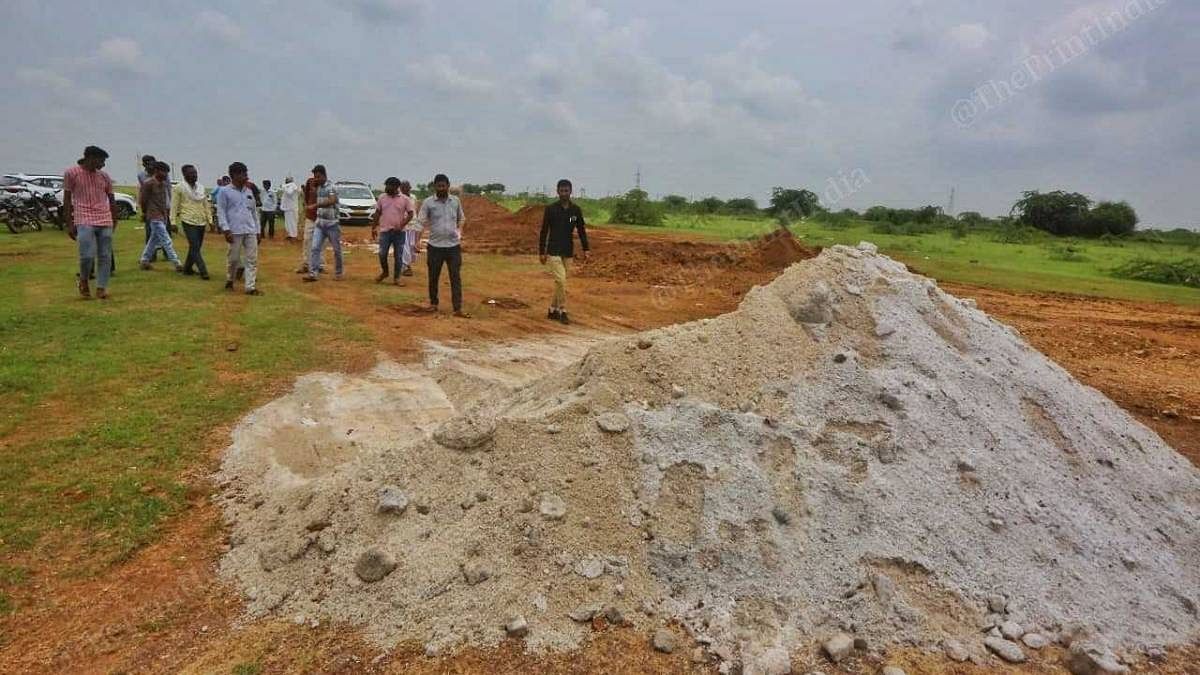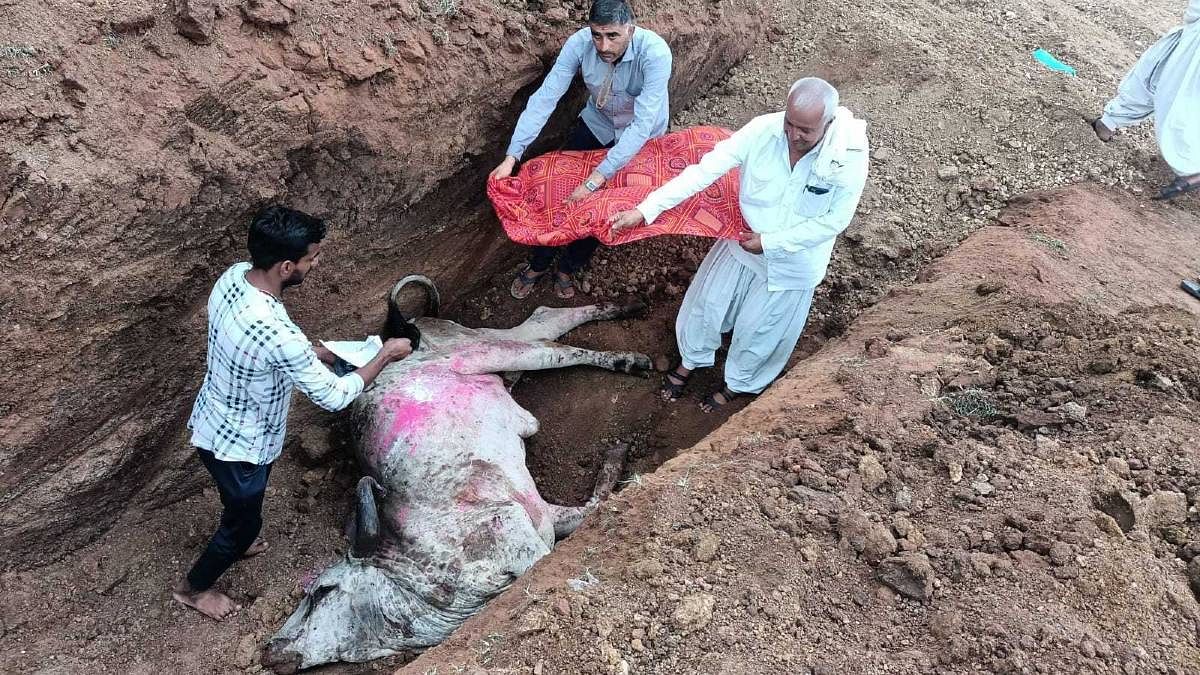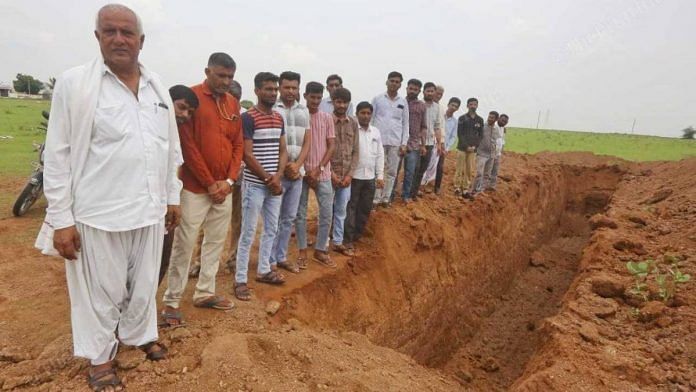Ratnal: In Ratnal village of Gujarat’s Kutch district, a lush two-acre plot of land flanking a highway lies mostly empty. The landscape is interrupted only by a few mounds of dirt, a pile of raw salt, and one freshly dug grave.
This piece of land is prime real estate, with local residents estimating its value to be in crores. However, the owner of the land — Trikam Ramji Varchand, the sarpanch of Ratnal village — has offered up the plot for burial of cows affected by lumpy skin disease amid a deadly outbreak that has gripped parts of Gujarat, Rajasthan and Punjab.
The villagers are keeping note of their dead cattle. Since 1 August, 33 cows have died in Ratnal. Disturbed by the visuals of mass burials of cattle in cities, Varchand decided to lend his plot to give the animals a dignified farewell.
Shankar Ahir, a resident of Ratnal, told ThePrint that the people were overwhelmed by the sarpanch’s gesture. “Nobody charges money for the services they provide for these burials. The JCB contractor is carrying out all the digging without any charges. Tonnes of raw salt was donated by the Shree Ram Salt company.”

So far, around 20,000 cases of lumpy skin disease — which is mainly passed on by blood-feeding insects — have been reported in Punjab and 424 cattle have died. In Himachal Pradesh, 40 animal deaths have been reported. In Rajasthan too, the disease is spreading rapidly among cattle.
Symptoms of the disease include fever, runny nose, reduced milk yield and the formation of nodes on the infected animal’s skin that look like lumps.
Also read: In Kutch camps, sick cows gnash teeth, flies cover wounds, as they wait to die of lumpy skin disease
‘We respect cattle like our mother’
Babubhai Humbal, CEO of Gandhidham-based Shree Ram Salt, told ThePrint that his firm has donated more than 150 tonnes of raw salt for the burials of cows that succumbed to the disease.
“We have sent several 30-tonne trucks to Anjar, Bhuj, Chandrani, and Chandiya over the last few months,” he told ThePrint.
Rasik Ahir, a local resident, said that visuals of infected cattle carcasses rotting in the open in Bhuj had disheartened the villagers.
“When a cow dies, we send her off with kumkum, a red drape, and raw salt. Our cattle are like family, we respect them like a mother. We are taking utmost care of the cattle in our homes, but we also want to ensure that the infected animals get a worthy send-off,” he added.

Asked about the cost of his land, Varchand brushed off the question: “How does it matter? I have inherited this wealth from my ancestors, it should be put to good use. These cows need a resting space. Where will we bury them otherwise?”
Shankar later said: “The value of this land could be in crores. Who does something like this in kalyug?”
(Edited by Nida Fatima Siddiqui)
Also read: Holy Cow! At Gandhidham, dying cattle are overrunning streets, and overwhelming administration






